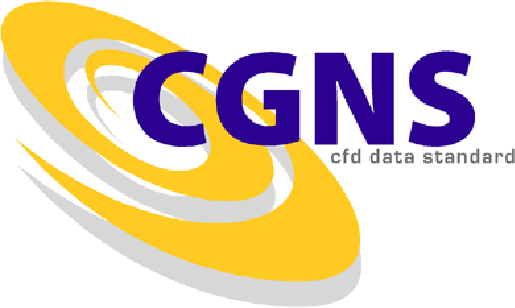 (CGNS Documentation Home Page)
(Steering Committee Charter)
(Overview and Entry-Level Document)
(A User's Guide to CGNS)
(Mid-Level Library)
(Standard Interface Data Structures)
(SIDS File Mapping Manual)
(CGIO User's Guide)
(Parallel CGNS User's Guide)
(ADF Implementation)
(HDF5 Implementation)
(Python Implementation)
(CGNS Tools and Utilities)
(CGNS Documentation Home Page)
(Steering Committee Charter)
(Overview and Entry-Level Document)
(A User's Guide to CGNS)
(Mid-Level Library)
(Standard Interface Data Structures)
(SIDS File Mapping Manual)
(CGIO User's Guide)
(Parallel CGNS User's Guide)
(ADF Implementation)
(HDF5 Implementation)
(Python Implementation)
(CGNS Tools and Utilities)
(The CGIO Software Library)
(Database-Level Routines)
(Data Structure Management Routines)
(Link Management Routines)
(Node Management Routines)
(Data I/O Routines)
(Error Messages and Routines)
(Miscellaneous Routines)
(Example Programs)

|
| CFD General Notation System
CGIO User's Guide
|
Version 4.2
The CGIO interface provides low-level access to the database manager which
underlies CGNS. The original database manager for CGNS was
ADF (Advanced Data Format), and as such
much of the CGIO interface routines are patterned after this. Starting
with CGNS library version 2.xx, a new database manager
HDF5 (Hierarchical Data Format) was
introduced. At that time only one of these database managers could be used
at a time, and this was selected at build time.
In CGNS library version 3.xx, the CGIO interface was developed to support
both database managers simultaneously, and in a fashion transparent to
the application code. This is now the preferred way to access the database
manager.
This document defines the general structure of a database file, but not
the specific implementation details. See the
ADF and
HDF5 Implementations for the details.
The CGIO core routines used to store and retrieve data from the
database manager are also described.
- The CGIO Software Library
- Database-Level Routines
- cgio_is_supported - Check for supported database type
- cgio_check_file - Check for valid database
- cgio_open_file - Open a database
- cgio_close_file - Close a database
- cgio_get_file_type - Get the type of the database
- cgio_get_root_id - Get the root ID of the database
- Data Structure Management Routines
- cgio_create_node - Create an empty node
- cgio_new_node - Create a node with data
- cgio_delete_node - Delete a node
- cgio_move_node - Move a node to new location
- cgio_number_children - Get the number of children of a node
- cgio_children_names - Get the child names of a node
- cgio_children_ids - Get a unique identifiers for children of a node
- Link Management Routines
- cgio_is_link - Test if a node is a link
- cgio_link_size - Get link path size
- cgio_create_link - Create a link
- cgio_get_link - Get the path information from a link
- Node Management Routines
- cgio_get_node_id - Get a unique identifier for a node
- cgio_get_name - Get the name of a node
- cgio_set_name - Set (change) the name of a node
- cgio_get_label - Get the label of a node
- cgio_set_label - Set (change) the label of a node
- cgio_get_data_type - Get the data type for a node
- cgio_get_dimensions - Get the number of dimensions
- cgio_set_dimensions - Set the data type and dimension information
- Data I/O Routines
- cgio_read_data_type - Read the data from a node (with partial capabilities)
- cgio_read_all_data_type - Read all the data into a contiguous memory space
- cgio_read_block_data_type - Read a contiguous block of data from a node
- cgio_write_data - Write the data to a node (with partial capabilities)
- cgio_write_all_data - Write all the data from a contiguous memory space
- cgio_write_data_type - Write the data to a node (with partial capabilities)
- cgio_write_all_data_type - Write all the data from a contiguous memory space
- cgio_write_block_data - Write a contiguous block of data to a node
- Error Handling and Messages
- cgio_error_message - Get the error message for the last error
- cgio_error_code - Get last error code and database type
- cgio_error_exit - Print error message and abort
- cgio_error_abort - Set/unset abort on error option
- Error messages
- Miscellaneous Routines
- cgio_flush_to_disk - Force a write to disk
- cgio_library_version - Get the database library version
- cgio_file_version - Get the database file version and dates
- Example Programs
The complete CGIO Manual in HTML form
is also available for installation on a local system.
This is a gzip'ed tar file (32K, 143K gunzip'ed), and may be downloaded
by clicking on the link while holding down the shift key, assuming your
browser supports this capability.
A dialogue box will appear for you to specify the directory and file name.
To unpack the contents, do
gunzip -c cgio.tar.gz | tar xvf -
The files will be extracted and stored in the directory cgio.
Point your browser to the local file cgio/index.html to
display the CGIO Manual home page.
Note also that some links, to other manuals, etc., may not work.


